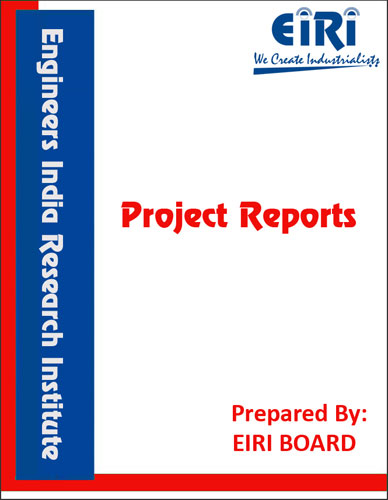LED BULBS, TUBES, PANEL LIGHT, DOWN LIGHT, SPOT LIGHT, STREET LIGHT, FLOOD LIGHT AND BAY LIGHT MANUFACTURING
The project report includes Present Market Position and Expected Future Demand, Market Size, Statistics, Trends, SWOT Analysis and Forecasts. Report provides a comprehensive analysis from industry covering detailed reporting and evaluates the position of the industry by providing insights to the SWOT analysis of the industry.
We can prepare PROJECT REPORT as per your INVESTMENT PLAN for BANK LOAN REQUIREMENT and INDUSTRY ANALYSIS. All reports are prepared by highly qualified consultants and verified by a panel of experts.
Have Query? Click Here to Chat
Industry Expert is Online, Chat with him for more detail.

Light emitting diode (LED) is a semiconducting device that emits light when electrical current is applied to the device. LEDs are said to be the future light source because of their low energy usage and efficiency. The advantages of LEDs are that they are very robust, have a very long lifetime or up to 50,000 hours, they are easily dimmable and fail by dimming over time, rather
than burn off like incandescent light bulbs. LEDs cause less glare irritation because of the smaller beam angle of the luminaire. LEDs are very common as indicator lights in electrical equipment and recently in higher power applications such as flashlights and artificial lighting. The colour of the light depends on the composition and condition of the semiconducting material
used. It can be infrared, visible or ultraviolet. Blue, green and red LEDs can be used to produce most perceptible colours, including white.
Today, after many years of development, the LEDs on the market are now emitting white light in different colour temperatures as well as an advanced RGB control to produce coloured light to capture different moods for various aspects.
Because of the huge potential of LED technology and the constant improvements in the quality (e.g. colour rendering), it can be predicted that the use of LEDs will become more common in both homes and offices with the advantage of energy savings due to their efficiency and long lifetime. Another advantage of using LED is it does not contain Hg, which is not an eco-friendly chemical and has adverse effect on human body.
What is light emitting diode?
The pn junction diode, which is specially doped and made of special type of semiconductor, emits light when it is forward biased is called light emitting diode.
Working principle of light emitting diodeTo understand the working principle of light emitting diode, we first have to understand a basic of quantum theory. According to this theory, when an
electron comes down from its higher energy level to lower energy level, it emits energy in form of a photon. The energy of this photon is equal to the energy gap between these two energy levels. When a pn junction diode is forward biased, current flows through the diode. Flow of current through the semiconductor is caused by both flow of free electrons in opposite direction of
current and flow of holes in the direction of current. Hence during flow of these charge carriers, there will be recombinations. Recombination mean electrons in condition band jump down to the valence band. During this jump electron will emit electromagnetic energy in form of photons whose energy is equal to forbidden energy gap Eg. Again according to quantum theory, energy of
a photon is the product of frequency of electromagnetic radiation and Planck constant. Where h is Planck constant Again velocity of electromagnetic radiation is fixed and it is equal to the speed of light i.e. c. The frequency of radiation f is related to velocity of light as f = c / ?. Where ? is wavelength of the electromagnetic radiation. Hence from equation (1) So we have seen that wavelength of electromagnetic radiation is inversely proportional to the forbidden energy gap. In normal silicon, germanium semiconductor this forbidden energy gaps between condition and valence band are such that entire radiation of electromagnetic wave during recombinations is in the form of inferred radiation. The wavelengths of the inferred are out of our visible range so we can not see it. Inferred electromagnetic radiation is nothing but heat. This is because, silicon and germanium semiconductor are not direct gap semiconductor rather these are indirect gap semiconductor. In indirect gap semiconductor the maximum energy level of valence band and minimum energy level of conduction band do not occur at same momenta of electrons. Hence during recombinations of electrons and holes that is migration of electrons from conduction band to valence band the momentum of electrons would be changed.
INTRODUCTION
APPLICATION OF LED OR LIGHT EMITTING DIODE
ADVANTAGES OF LED OR LIGHT EMITTING DIODE
TYPES OF LED LIGHT
TYPES OF LED BULB
TOP 10 BENEFITS OF LED LIGHTING
DRAW BACK OF LED LIGHT
USES AND APPLICATION
B.I.S. SPECIFICATION
MARKET SURVEY
SWOT ANALYSIS
EXPORTS OF LED LIGHT
EXPORTS OF LIGHT BULB LED
ANALYSIS OF IMPORTS OF LED LIGHT
MANUFACTURERS/SUPPLIERS OF LED TUBE LIGHT
MANUFACTURERS/SUPPLIERS OF LED BULB
MANUFACTURING PROCES
ASSEMBLING PROCESS
QUALITY CONTROL
FOR INDOOR LIGHT
PLANT LAYOUT
SUPPLIERS OF PLANT AND MACHINERY FOR LED TUBE AND BULB
SUPPLIERS OF RAW MATERIALS
APPENDIX – A:
1. COST OF PLANT ECONOMICS
2. LAND & BUILDING
3. PLANT AND MACHINERY
4. FIXED CAPITAL INVESTMENT
5. RAW MATERIAL
6. SALARY AND WAGES
7. UTILITIES AND OVERHEADS
8. TOTAL WORKING CAPITAL
9. COST OF PRODUCTION
10. PROFITABILITY ANALYSIS
11. BREAK EVEN POINT
12. RESOURCES OF FINANCE
13. INTEREST CHART
14. DEPRECIATION CHART
15. CASH FLOW STATEMENT
16. PROJECTED BALANCE SHEET



